How a seawater aquarium is created Part 20: Cyanobacteria, fully caught!
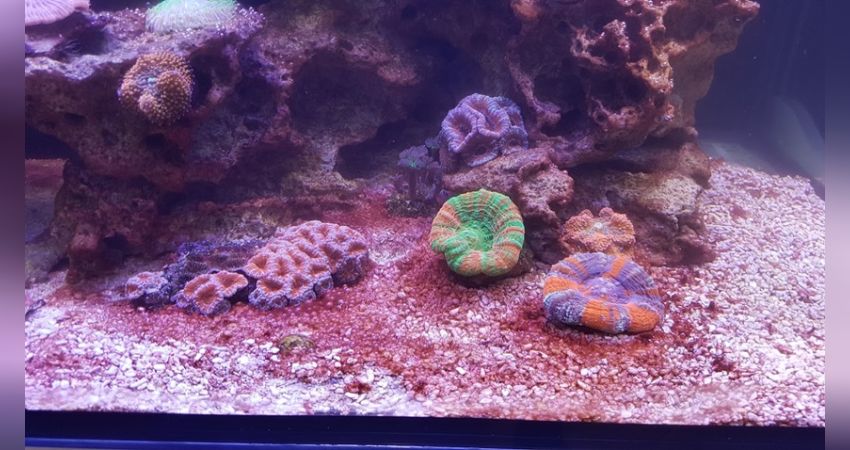
Of course, we are not immune to plagues. Immediately after the diatoms that are typical during the run-in, the whole thing quickly turned a rich red - we had cyanobacteria! First the bottom, a short time later the stones too. And it was quite an agile form, according to an examination by Mrutzek Meeresaquaristik. Here we show you the measures we took.
We had a visit from Aquaristik Singer from the Upper Palatinate at the beginning of August. did a super great aqua tour. Among other things, we were at Reef-Corner in Belgium, Korallen Basler (Eschweiler) and Meerwasser Böttcher (Bergheim). (Bergheim). It was a super great day, during which we, but also the "Singers", bought quite a few animals.
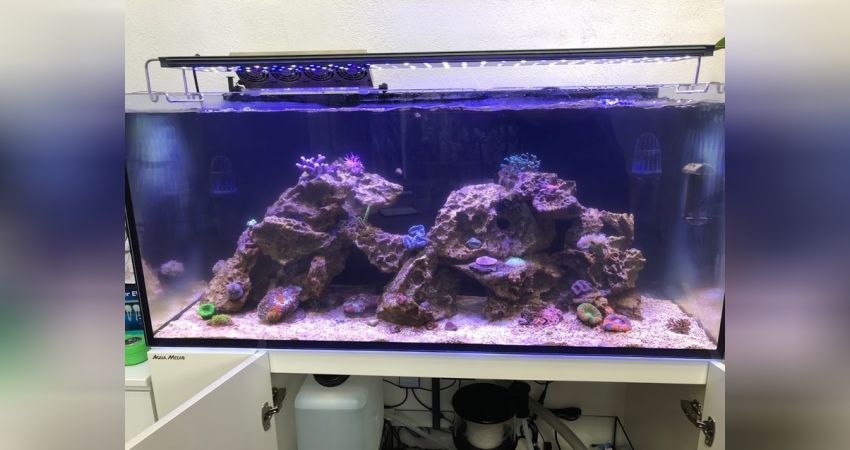

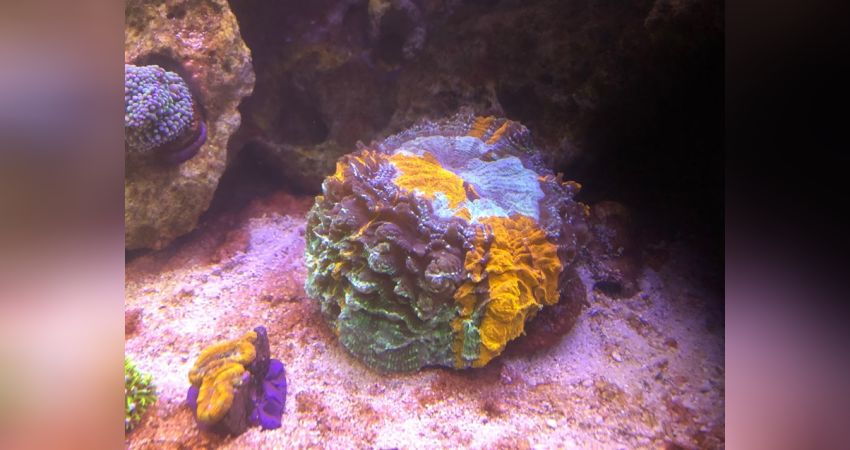
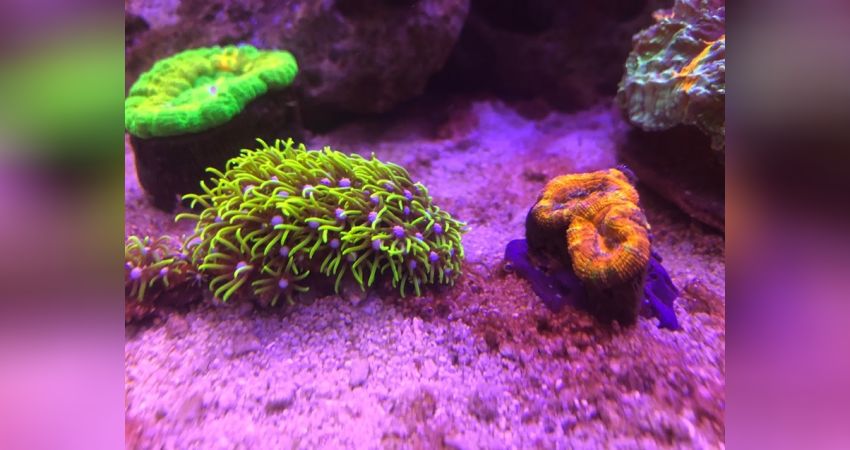
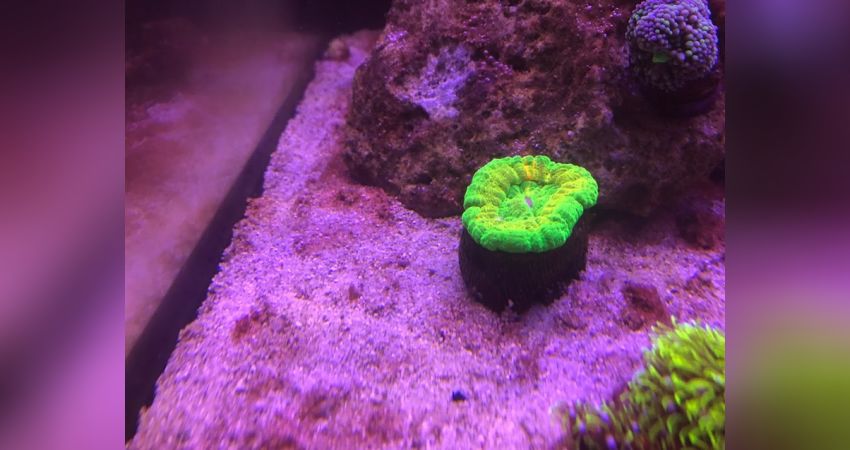
It was already foreseeable that the brown coatings would turn into red coatings. red coatings. But we didn't know for sure until mid-August.
Now good advice was expensive! Despite all the articles we have on the subject of cyanobacteria are available here on our coral reef.com. Before we always had the 30.08 in the neck because we "had" to go away for 10 days on holiday. "had to". (Cancellation was no longer possible without high costs)
.What we have not tried everything to get the red coatings under control. get a grip on. Keep the phosphate value at 0.03 mg/L every day with Phosphor Plus, IOD increased to 0.06 - 0.08. Various adsorbers in and out, water analysis etc.
When it got worse and worse and we really had to siphon every day, we turned off the light for three days. After that it was quiet for two days and started all over again. We then started to add more bacteria to the tank with Rebiotic from FaunaMarin. to add more bacteria to the tank. Just at this time the new Fauna Marin RED X came onto the market, which we then also used.
Here now is the video the video that we made in three parts.
In addition to the above-mentioned remedy, there are other preparations on the market. For example, Aquaconnect offers Cyano Remove and Korallen-zucht.de offers Cyano Clean. We advise against using products from abroad, as they may contain antibiotics. This simply has no place in the aquarium and waste water.
Before using the products, you can put a few things to the personal test:
1. Do not introduce silicate into the water (good reverse osmosis system and mixed-bed resin filter).
2. check the water values (even with 0 phosphate, nitrite and nitrate, the cyanos grow magnificently. the cyanos grow magnificently! Conclusion: with these values nothing else, i.e. competing algae, bacteria, etc., can grow! etc. grow!!!) Especially in the beautiful SPS tanks, which are kept nutrient-poor tanks, I hear again and again that cyanosis occurs. Cyanos appear.
3. salt change (towards the end of the run-in phase I briefly had cyanos. Cyanos, I suspect they are part of the process. After a After a salt change, the few deposits disappeared)
.4. UVC (works great for me, but I only use it intermittently, because it also prevents the growth of other bacteria and algae.
5. phytoplankton (living it is a competition to the cynos and the corals and the zooplankton are happy)
.6. carbon filtration (helps to remove the pollutants of the cyanos, the fish and other the fish and other inhabitants such as snails, hermits etc. become fitter again. become fitter again in case of a heavy infestation of cyanos)
.7. regular water changes are better than having to replace 50% of the water in an emergency!
8. oxygen (especially in the cold season the cyanos seem to like it better that there is less aeration) cyanosis seem to like it better that there is less aeration and more nitrogen in the water. is introduced into the water)
9. light (every now and then you have to change the lamps in T5 and HQI, If cyanos appear, there must be something else wrong with the biology of the tank) I no longer do any of the much praised dark cures any more. Everything else suffers from it just as much as the cyanos and it will not change the cause of the plaque.
10. LED (If it is possible to change the settings as with my Radion, I adjust the parameters as best I can to my corals and their growth. corals and their growth, regardless of whether the cyanos like it or not!Further information on this subject will be given in the next part :-)
.How do you like this article?
Info
Author

Bookmark
Comments
Topics
Similar articles
- How a marine aquarium is created Part 26: Goodbye glass lice?
- How a marine aquarium is created Part 39: Montipora snails Phestilla sp.
- Mycosidol against cyanobacteria 2018
- How a seawater aquarium is created Part 24: Glass lice and turbellariae
- How a marine aquarium is created-Part 6: The recirculation pump
- How a marine aquarium is created Part 50: What are the costs of a 400 litre marine aquarium?
- Acroproa Strudelwürmer
- How a seawater aquarium is created-Part 8: The salt, salinity and density
- Die Plage Falkenbergia rufolanosa
- Dinoflagellaten und weitere Plagegeister
Comments To the top
vielen Dank für deinen Kommentar. Ja manche Aquarianer berichten von einem Erfolg bei der Zugabe von Plankton für eine längere Zeit. Ob dass immer hilft bei starkem Befall ist halt immer so eine Sache.
Mann sollte sowieso vor Anwendung von solchen Mitteln immer alles andere erst mal versucht haben. Das heisst z.b. folgende Punkte:
1. Kein Silikat ins Wasser einbringen (gute Umkehrosmoseanlage und Mischbett-Harz-filter)
2. Wasserwerte überprüfen (auch bei 0 Phosphat, Nitrit und Nitrat wachsen die Cyanos prächtig! Fazit: bei diesen Werten kann logischerweise auch nix anderes, also konkurrierende Algen, Bakterien etc. wachsen!!!) Gerade in den schönen SPS Becken die Nährstoffarm gefahren werden, höre ich immer wieder bei Salz und Lichtwechsel, dass Cyanos auftreten.
3. Salzwechsel (gegen Ende der Einfahrphase hatte ich kurzzeitig Cyanos, ich vermute, dass sie zum Prozess dazu gehören. Nach einem Salzwechsel, sind die wenigen Beläge verschwunden)
4. UVC (hilft bei mir prima aber ich setze sie nur zeitweise ein, denn sie verhindert auch das Wachsen von anderen Bakterien und Algen!)
5. Phytoplankton (lebend stellt es eine Konkurrenz zu den Cynos dar und die Korallen und das Zooplankton freuen sich)
6. Kohlefilterung (Hilft sicher die Schadstoffe der Cyanos ab zu bauen, die Fische und anderen Bewohner wie Schnecken, Einsiedler etc. werden wieder fitter bei einem starken Befall von Cyanos)
7. Regelmäßige Wasserwechsel sind besser als im Ernstfall 50% auszutauschen zu müssen!
8. Sauerstoff (gerade in der kalten Jahreszeit scheint es den Cyanos besser zu gefallen, dass weniger gelüftet wird und mehr Stickstoff ins Wasser eingebracht wird)
9. Licht (Ab und zu muss man bei T5 und HQI die Lampen auswechseln, treten dann Cyanos auf, hat bestimmt schon etwas anderes in der Beckenbiologie nicht gestimmt) Ich mache keine der so gepriesenen Dunkelkuren mehr. Alles andere leidet darunter ebenso wie die Cyanos und es wird nicht die Ursache der Beläge verändern.
10. LED (Falls es möglich ist die Einstellungen zu verändern wie bei meiner Radion, stelle ich die Parameter so gut es geht auf meine Korallen und deren Wachstum ein, egal ob es den Cyanos gefällt oder nicht!)
Zu den aufzählungen gehört nun auch Planktonzugabe. Man kann es versuchen :-)
gruß Robert
Please register
In order to be able to write something yourself, you must register in advance.







